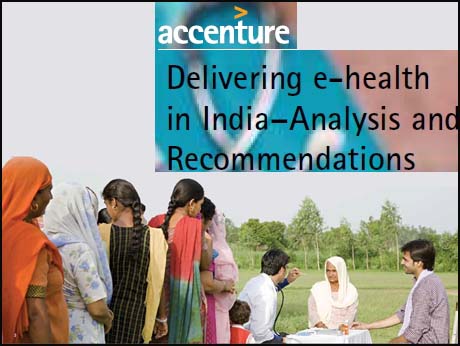
February 2, 2014: The adoption of IT in Health Facilities in India has been abysmal at best, finds a new study by global management consulting, technology services and outsourcing company Accenture. The comprehensive adoption of Information Technology (IT) practices is central to the success of connected health care systems.
The study titled ‘Delivering e-Health in India – Analysis and Recommendations’ focuses on the access to healthcare systems in India as per global and regional standards. The report highlights the current status of the Indian healthcare industry and its growth in the past decade. It identifies that greater healthcare funding cannot guarantee better access to the healthcare facilities, unless accompanied by powerful and innovative interventions to improve the healthcare ecosystem.
While the system has evolved in India over the past 50-60 years, the coverage and service levels of the entire public health ecosystem remains inadequate. Indian healthcare system continues to suffer from underfunding and poor governance which have created significant inequities in providing basic health care. While India’s healthcare expenditure has increased in the past and the government plans to increase the same further to nearly 2.5% of the GDP in the 12th five year plan, India has invested less public money in health than most comparable countries. India’s overall health spending does reach 6% of the GDP but most of that is private money.
Major challenges hampering the growth of the healthcare sector and therefore the delivery of healthcare services are:
1. Substantial gaps in healthcare infrastructure: Hospital bed density in India has stagnated at 0.9 per 1000 population since 2005 and falls significantly short of WHO laid guidelines of 3.511 per 1000 patients' population. Moreover, there is a huge inequity in utilization of facilities at the village, district and state levels with state level facilities remaining the most strained.
2. Low healthcare insurance service coverage leads to high levels of out of pocket spending: Nearly 80% of spend in India is out-of pocket, primarily due to with extremely limited insurance coverage, both personal and government funded. Research has shown that the proportion of medical and healthcare expenditure in overall personal consumption has risen considerably over the years.
3. Medical manpower remains inadequate: India is currently known to have approximately 600,000 doctors and 1.6 mn nurses. This translates into one doctor for every 1,800 people. The recommended WHO guidelines suggest that there should be 1 doctor for every 600 people. This translates into a resource gap of approximately 1.4 mn doctors and 2.8 mn nurses. There is also a clear disparity in the man power present in the rural and urban areas.
“Our report identifies the importance of shifting from ‘infrastructure focus’ to ‘productivity focus’ to generate corresponding improvements in India’s healthcare access. This can only be achieved if larger fund allocation for healthcare is accompanied by effective and innovative interventions to improve the existing healthcare ecosystem in order to achieve global standards,” said Krishna Giri, managing director, Health & Public Services, Accenture in India He also added, “Comprehensive adoption of Information Technology and digitization of systems to improve access to these services is central to the success of these projects”.
It is also imperative to note that the comprehensive adoption of Information Technology (IT) practices is central to the success of these recommendations. The adoption of IT in Health Facilities in India has been abysmal at best. While it is definitely a cause for concern, it is imperative to understand the various drivers and roadblocks of health IT adoption in India, in order to ensure the successful implementation of the recommendations made in this report.
The report proposes five key measures that Accenture believes will have the most significant impact on improving healthcare access in India:
1. Implementing hospital information systems and records digitization: Hospital Information System is the Health IT systems recommended to improve delivery of healthcare services to the public. It is an integrated system designed to manage the administrative, financial and clinical aspects of a hospital and its services.
2. Automation of supply chain: Supply chain management system for drugs, vaccines and other consumables, along with equipment and other hard assets, is the cornerstone of all successful healthcare systems. The most critical components of the same are cold chain and logistics systems.
3. Empowering Citizens through Information Dissemination: A citizen portal would aim at providing information and services transparently to public with the vision to enhance the citizen’s experience. Citizen portal implementation would lead to Better Messaging, Greater Efficiency, and Improved Citizen Engagement.
4. Handheld based data collection: Given the limitations of providing hard IT infrastructure in the vast reaches of rural India, it is proposed that handheld based data collection modules would result in significant advantages.
5. Analytics-enabled real time disease surveillance: With real time surveillance costs, and ‘time-to-reaction’ are significantly lowered, leading to not only economic savings, but a much more efficient outbreak intervention mechanism as well.
The recommended interventions will have a potential impact throughout the patient life cycle in the healthcare system. They can address several inefficiencies in the healthcare value chain in India, and provide increased healthcare access to citizens, without significantly increasing the spending on the same. While most of these proposed interventions have either been rolled out, or envisaged in parts of India, the implementation, almost always, has been partial or incomplete. What seems to be required is a whole-hog approach to the country-wide rollout of these interventions, failing which, the real benefits may not be fully realized.